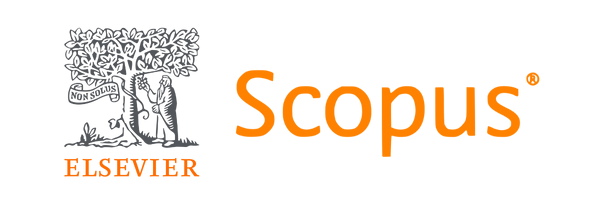Roma Toah: Social Construction of Inheritance Division of The Bangkalan Madura Community
Abstract
Applying Islamic law within the framework of social culture is never complete for research. Certain social entities understand Islamic law, originating from revelation to produce unique legal products. Roma Toah inheritance in Madurese society is a division of inheritance intended for all heirs without being based on the individual principle as in Islamic inheritance law in general. This study aims to understand the construction of social, cultural, and religious inheritance of Roma Toah in the people of West Madura, who are known to be firm in upholding their religious teachings. This study uses a qualitative method approach using a socio-legal approach. This study uses social construction analysis so that the meaning of the inheritance of Roma Toah can be well understood. This research resulted in the following findings; first, the legacy of Roma Toah survives based on the local wisdom of the Madurese community, based on two aspects that align with Islamic values; maintaining family ties intact and family economic resilience. Second, by using social construction analysis based on three phases; externalization, objectification, and internalization, the Roma Toah inheritance is built on a harmonious blend of culture, social, and religion through the legitimacy of traditionalist Madurese Ulama so that it is considered a system that does not conflict with Islamic values in maintaining family and economic integrity.
Keywords
Full Text:
PDFReferences
Al-Muqaddam, M. B. I. (2015). Fiqhul Haya’. Dar Amal.
Al-Zastrouw, N. (2017). Mengenal Sepintas Islam Nusantara. Hayula: Indonesian Journal of Multidisciplinary Islamic Studies, 1(1), 1–18.
At-Tirmizi, I. B. Bin. (1996). Al-Jami’ul Kabir (Vol II). Darul Garb Al-Islami.
Banakar, R. (2019). On socio-legal design. In Rättssociologiska institutionen. Lund University.
Berger, P. L., & Luckmann, T. (1990). Tafsir Sosial Atas Kenyataan : Sebuah Risalah Tentang Sosiologi Pengetahuan (terjemahan Hasan Basri). LP3ES.
Bukido, R., Harun, N., Gunawan, E., & Mantu, R. (2022). Harmonization of customary and Islamic law in the gama tradition of the muslim Mongondow community of North Sulawes. Ijtihad: Jurnal Wacana Hukum Islam Dan Kemanusiaan, 22(2), 239–254.
Hannan, A., & Abdillah, K. (2019). HEGEMONI RELIGIO-KEKUASAAN DAN TRANSFORMASI SOSIAL Mobilisasi Jaringan Kekuasaan dan Keagamaan Kyai dalam Dinamika Sosio-Kultural Masyarakat. Sosial Budaya, 16(1), 9–24.
Hefni, M. (2007). BHUPPA’-BHÂBHU’-GHURU-RATO (Studi Konstruktivisme-Strukturalis tentang Hierarkhi Kepatuhan dalam Budaya Masyarakat Madura). Karsa: Journal of Social and Islamic Culture, 12–20.
Hipni, M., & Karim, M. (2019). Akar Budaya Emansipasi Pekerja Imigran Wanita Madura; Kajian Terhadap Praktik Waris Adat Madura. KABILAH: Journal of Social Community, 4(2), 1–15.
Hipni, M., & Nahidloh, S. (2015). Budaya tanean lanjeng dalam pernikahan kerabat di kalangan keluarga pondok pesantren bangkalan. Jurnal Pamator: Jurnal Ilmiah Universitas Trunojoyo, 8(1), 55–64.
Kuntowijoyo. (2002). Perubahan Sosial Dalam Masyarakat Agraris: Madura 1850-1940. Mata Bangsa.
Moesa, A. M. (2007). Nasionalisme Kiai; Konstruksi Sosial Berbasis Agama. LKIS Pelangi Aksara.
Mukharrom, T., & Abdi, S. (2023). Harmonizing Islam and Human Rights Through the Reconstruction of Classical Islamic Tradition. Samarah: Jurnal Hukum Keluarga Dan Hukum Islam, 7(1), 40–57.
Mutawali, M. (2022). Customary Law of Dou Donggo Bima from the Perspective of Islamic and Indonesian Positive Law. AL-IHKAM: Jurnal Hukum & Pranata Sosial, 17(1), 1–27.
Nasional, D. P. (2008). Kamus Besar Bahasa Indonesia (KBBI). Gramedia Pustaka Utama.
Rifai, A. M. (2006). Manusia Madura. Pillar Media.
Rochana, T. (2012). Orang Madura: Suatu Tinjauan Antropologis. Humanus: Jurnal Ilmiah Ilmu-Ilmu Humaniora, 11(1), 46–51.
Sari, A. K., Budiarto, M. T., & Ekawati, R. (2022). Ethnomathematics study: cultural values and geometric concepts in the traditional" tanean-lanjang" house in Madura--Indonesia. JRAMathEdu (Journal of Research and Advances in Mathematics Education), 7(1), 46–54.
Sulaiman, A. (2016). Memahami teori konstruksi sosial Peter L. Berger. Society, 4(1), 15–22.
Syaikhu, S., Al Amruzi, M. F., Mujiburahman, M., & Norwili, N. (2023). Legal Harmonization in the Distribution of Inheritance in the Dayak Ngaju Community in Central Kalimantan, Indonesia. Samarah: Jurnal Hukum Keluarga Dan Hukum Islam, 7(1), 195–215.
Syam, N. (2005). Islam pesisir. LKiS Pelangi Aksara.
Syam, N. (2010). Agama Pelacur; Dramaturgi Transendental. LKIS Pelangi Aksara.
Takdir, M. (2018). Potret kerukunan berbasis kearifan lokal: Implementasi nilai-nilai harmoni dalam ungkapan “Rampak Naong Bringen Korong” dalam kehidupan masyarakat Madura. Khazanah: Jurnal Studi Islam Dan Humaniora, 16(1), 73–102.
Wiyata, A. L. (2013). Mencari Madura. Bidik-Phronesis Publishing.
Zubairi, D. (2013). Rahasia Perempuan Madura: Esai-Esai Remeh Seputar Kebudayaan Madura. al-Afkar Press.
DOI: http://dx.doi.org/10.30984/jis.v21i1.2342
Article Metrics
Abstract view : 633 timesPDF - 405 times
Refbacks
- There are currently no refbacks.
Copyright (c) 2023 Jurnal Ilmiah Al-Syir'ah

This work is licensed under a Creative Commons Attribution-NonCommercial-ShareAlike 4.0 International License.
Rumah Jurnal IAIN Manado
Jl. Dr. S.H. Sarundajang, Kawasan Ringroad I, Malendeng Manado Kode Pos 95128, Sulawesi Utara, Indonesia.

All publication by Jurnal Ilmiah Al-Syir'ah are licensed under a Creative Commons Attribution 4.0 International licence.
Jurnal Ilmiah Al-Syir’ah, ISSN 1693-4202 (Print), ISSN 2528-0368 (Online)






